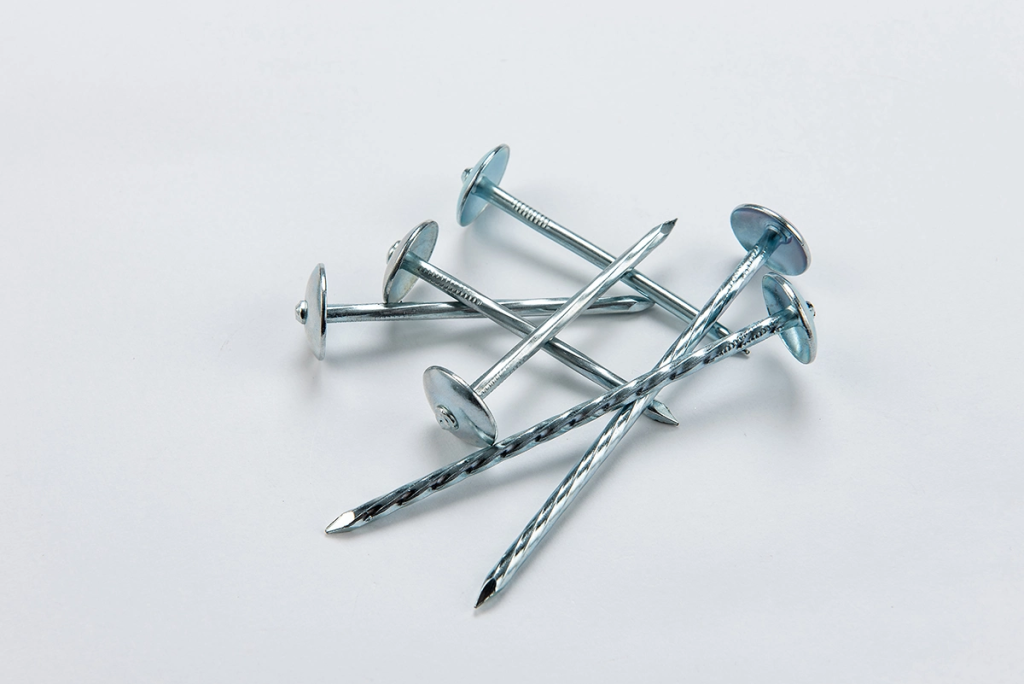
Assembled roofing nails are a specific type of fastener used in the construction of roofs. These nails are designed for securing various roofing materials, such as shingles, tiles, and felt paper, to the roof deck or sheathing. The term “assembled” in assembled roofing nails typically refers to the way these nails are manufactured and packaged.
Here are some key features and characteristics of assembled roofing nails:
- Composition: Assembled roofing nails are typically made of durable and corrosion-resistant materials like galvanized steel or stainless steel. Galvanized nails are coated with a layer of zinc to protect them from rust and corrosion, making them suitable for outdoor use.
- Shank Design: The shank of assembled roofing nails can have different designs, including smooth shanks or ring shanks. Ring shanks have small ridges or rings along the length of the nail, providing additional grip and holding power.
- Head Types: Roofing nails often have large, flat heads, designed to securely hold roofing materials in place. The shape and size of the head can vary depending on the specific roofing material and application.
- Length: The length of assembled roofing nails can vary to accommodate different roofing materials and thicknesses of the roof deck or sheathing. Common lengths range from 1 inch to 3 inches or more.
- Packaging: The term “assembled” indicates that these nails are typically sold in a pre-assembled coil or strip, often loaded into a coil roofing nail gun. This type of packaging allows for efficient and rapid installation, as the nails are automatically fed into the nail gun, reducing the need to reload nails frequently.
- Application: Assembled roofing nails are specifically designed for roofing applications, where they are used to attach shingles, roofing felt, underlayment, and other roofing materials to the roof’s substrate.

Roofing professionals and contractors often use nail guns designed for assembled roofing nails to expedite the installation process. These tools are equipped with a magazine that holds the nail coil or strip, making it easier to work on large roofing projects.
When choosing assembled roofing nails, it’s essential to consider factors such as the roofing material, local climate conditions, and local building codes to ensure that you select the appropriate nail type and size for your specific project. Proper installation is crucial for the long-term durability and weather resistance of a roofing system.

